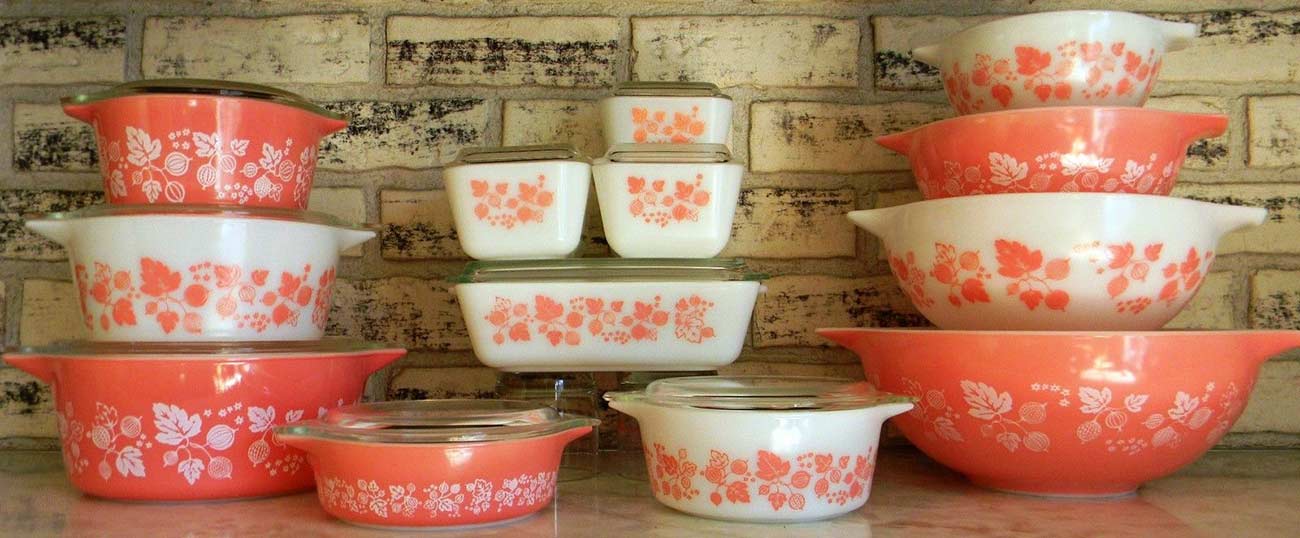Vintage Pyrex is popular with people for many different reasons. Some people remember growing up with it at home while others collect the pieces. Some people enjoy searching for vintage pieces at thrift shops and tag sales. If you are one of these Pyrex fans, you may want to know how to tell if it is vintage.
Pyrex is a brand name for ovenware and was started by Corning Glassworks. The company introduced Pyrex in 1915 and the set included glass ovenware such as casseroles, pie plates, custard cups, baking dishes, a loaf pan, and shirred egg dishes. It became popular right away because it cooks food more quickly, food doesn’t stick to glass, it was attractive, and food flavors could be cleaned off the dish.
It is easy to authenticate Pyrex and you can use this process to determine whether a piece is vintage. Vintage products are usually those made 20 to 100 years ago so the key is in determining when the piece was made. Continue reading to learn how to tell if Pyrex is vintage.
Examine the Pyrex for Markings and Stamps
You can look at the glass markings, stamps, and logos on your Pyrex to determine when the piece was produced. The oldest pieces have Pyrex in all capital letters inside a circle with a “CG” that stands for the company name, Corning Glassworks. Some of the early stamps also have a small figure blowing glass.
In the mid-1950s, the company added “Made in the U.S.A.” in all capital letters. They also added a trademark symbol and trademark wording. The circle around the wording was replaced with straight lines in the 1960s but these pieces are still vintage.
If the piece is a casserole dish or bowl, it will have an inventory number included on the stamp. If you know the inventory number, it will help you determine when the piece was made. In addition, pieces made after the 1970s may include other information such as a “no broiling” stamp. All of these clues will help you determine if the Pyrex is vintage.
Look at the Patterns and Colors
Another way to determine whether Pyrex is vintage is by looking at the color and pattern of the piece. Originally, from 1915 until the mid 1940s, pieces were clear glass. The colored and patterned bowls and casserole dishes appeared and these pieces are very popular with collectors. The first colors to appear were pastel shades of blue, green, and pink. From 1945 to 1950, they produced primary colors (red, yellow, blue, and green).
Patterns were introduced in the 1950s. You can find Pyrex with the Snowflake pattern both in white on blue and white on black that were produced from the mid 1950s to the late 1960s. The following patterns are some of the most common:
- Butterprint: farm scenes with roosters and farm figures from the late 1950s to the late 1960s
- Gooseberry: berries on vines with leaves from the late 1950s through most of the 1960s
- Town and Country: abstract star-like designs in the 1960s
- New Dot: large colorful dots in the late 1960s
- Friendship: deep orange and yellow roosters in the 1960s
- Butterfly Gold: floral patterns in the 1970s
- Autumn Wheat: sheaves of wheat in the 80s
If you become familiar with some of the patterns, you will be able to identify if your Pyrex is vintage.
Ask a Professional
If you need to know whether a piece is vintage and you are unable to identify it using the other methods, you can take it to a professional for authentication. You can go to an antique store, a consignment shop, or a professional who specializes in Pyrex. You can also ask older family members or friends who might remember the piece.
People buy vintage Pyrex both to collect it and to use it. It is well made and still cooks food effectively; plus, it adds a splash of color and nostalgia to your kitchen.
